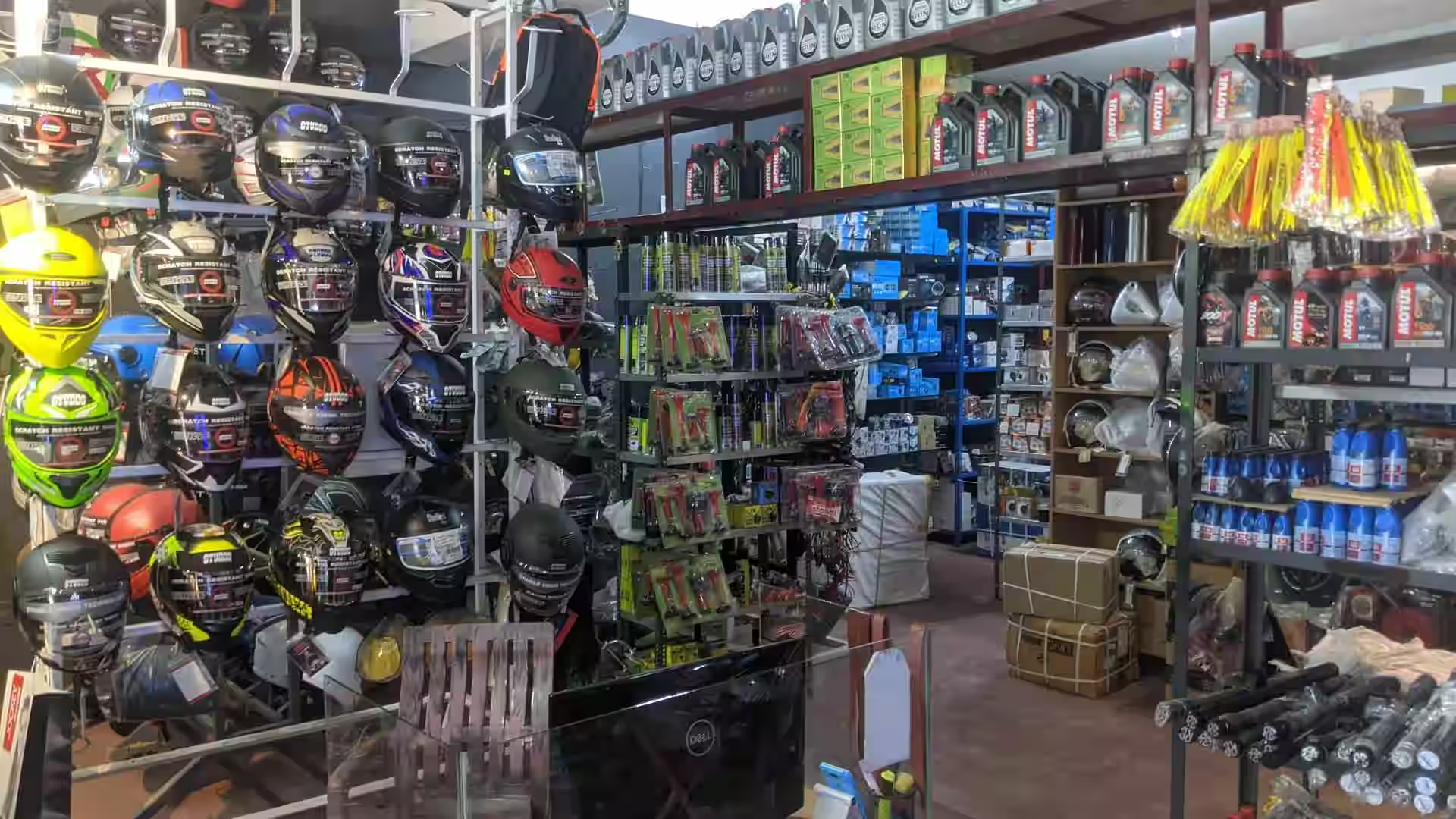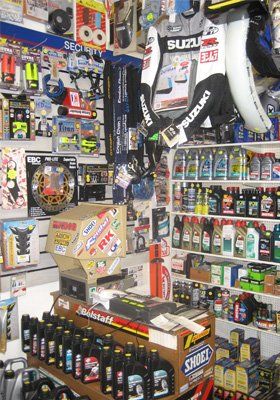Essential Motorcycle Parts NZ for Peak Performance and Safety
Essential Motorcycle Parts NZ for Peak Performance and Safety
Blog Article
Understanding the Vital Parts of a Bike: A Comprehensive Overview for Enthusiasts
For motorcycle enthusiasts wanting to raise their riding experience and guarantee their bikes run efficiently, recognizing the crucial parts of a motorbike is paramount. Each aspect, from the engine's elaborate operations to the essential function of the braking systems, not only influences performance yet additionally safety and convenience. This guide will certainly walk via the basic parts that every motorcyclist must know with, enabling educated selections in both maintenance and potential upgrades. As we start this expedition, one must ask: how does each element engage to develop the smooth ride every enthusiast seeks?
Engine Elements

The camshaft plays a vital role in regulating the timing of the engine's valves, ensuring the exact opening and closing essential for effective fuel and air consumption, as well as exhaust expulsion. This timing is vital to keeping ideal engine efficiency and efficiency. In addition, the carburetor or gas injection system, depending on the motorbike version, is accountable for mixing air with gas in the correct ratio for combustion.
The air conditioning system, either air or liquid-based, works to keep the engine's temperature within functional limits, protecting against getting too hot and guaranteeing durability - motorcycle parts nz. Each element, carefully created and integrated, adds to the smooth procedure of the engine, defining the motorbike's power outcome and general performance
Transmission System
Indispensable to the bike's functionality, the transmission system guarantees efficient power transfer from the engine to the wheels. This system consists of numerous vital elements, including the clutch, gearbox, and last drive, each playing a vital function in converting the engine's power right into activity. The clutch, typically operated by a hand lever, serves to engage and disengage the engine from the transmission, enabling smooth gear changes and controlled acceleration.
The gearbox, typically referred to as the transmission correct, has a collection of gears that bikers can manually shift with to change the bike's speed and torque outcome. These equipments are set up in a sequence that makes it possible for the motorbike to accelerate efficiently and maintain optimum engine efficiency throughout numerous speeds. The majority of motorbikes utilize a consecutive gearbox, requiring the motorcyclist to change gears in a fixed order.
Braking Systems
While understanding the transmission system is vital to utilizing a motorbike's power, equally vital is the capacity to regulate and stop that power properly, which is where braking mechanisms enter into play. Brakes are essential for safety and performance, providing the rider with the essential control to navigate different terrains and problems. Typically, bikes include two kinds of stopping systems: disc brakes and drum brakes.
Disc brakes are a lot more widespread in modern-day motorbikes due to their exceptional efficiency. This system provides far better warmth dissipation, constant efficiency, and improved quiting power, specifically in damp problems.
Alternatively, drum brakes, though less typical, are still located in some motorcycles. They work mens riding gear by pressing brake footwear against the inner surface of a drum affixed to the wheel. While usually less effective in warm dissipation and stopping power, drum brakes are less complex and more affordable.
Recognizing these braking systems' subtleties permits cyclists to keep their motorbikes correctly and value the design that makes certain safe and reliable stopping.
Suspension and Steering
Suspension and guiding systems are essential components that dramatically affect a motorbike's handling and adventure comfort. The suspension system, being composed of forks at the front and shock absorbers at the rear, takes in roadway irregularities, improving security and control. Front forks, inverted or commonly telescopic, compress and rebound to reduce effects, while rear shock absorbers maintain tire call with the road, essential for grip and safety and security.
Guiding, centered around the handlebars, links the cyclist to the motorbike's directional control. The steering head bearings guarantee smooth operation, permitting accurate ability to move. Appropriate placement and upkeep of these bearings are crucial for predictable steering reaction and decreasing motorcyclist tiredness.
The suspension's adjustability is one more essential facet; preload, damping, and rebound settings allow personalization to fit numerous riding styles and conditions. This versatility is necessary for maximizing efficiency, whether navigating metropolitan roads or dealing with rugged routes. Developments like digital shock absorber offer real-time changes, enhancing trip top quality across diverse terrains.

Electric Equipments
After guaranteeing a controlled and smooth trip through effective suspension and guiding systems, focus transforms to the electric systems, an essential facet of contemporary bikes. These systems play a critical function not just in starting the engine however additionally in powering different elements that enhance the capability and safety of the bike.
At the heart of a motorbike's electrical system is the battery, which stores electric power needed for beginning the from this source engine and powering complementary systems - motocross parts nz. The alternator or generator, paired with the rectifier-regulator, makes certain the battery remains billed while the motorbike is in operation, transforming mechanical energy into electrical power and maintaining voltage degrees
The ignition system, one more vital part, is accountable for igniting the air-fuel mixture in the engine's cylinders. Modern motorbikes typically use a digital ignition system, offering better efficiency and integrity contrasted to typical systems.
Illumination systems, including headlights, tail lights, and indicators, are also vital, ensuring presence and security for the biker. Additional digital parts such as sensing units, control systems, and shows add to sophisticated attributes like gas shot management, anti-lock braking systems (ABDOMINAL MUSCLE), and digital dashboards, further boosting the riding experience.
Final Thought
A complete comprehension of a motorcycle's crucial components, including the engine, transmission system, braking devices, suspension, steering, and electrical systems, is crucial for enthusiasts aiming to optimize safety and security, comfort, and performance. Proficiency of these elements permits educated choices pertaining to upkeep and upgrades, ultimately enhancing the riding experience. By incorporating this understanding, cyclists can guarantee their motorcycles run at peak performance and integrity, thus making best use read the full info here of both pleasure and longevity of their automobiles.
For bike lovers looking to raise their riding experience and ensure their bikes run smoothly, comprehending the crucial parts of a bike is vital.Essential to the motorbike's capability, the transmission system makes sure reliable power transfer from the engine to the wheels.While understanding the transmission system is key to utilizing a motorcycle's power, just as vital is the capability to control and quit that power successfully, which is where stopping devices come into play. Generally, motorbikes feature 2 kinds of braking systems: disc brakes and drum brakes.
A comprehensive understanding of a bike's necessary components, consisting of the engine, transmission system, braking mechanisms, suspension, steering, and electrical systems, is crucial for fanatics aiming to enhance convenience, efficiency, and safety.
Report this page